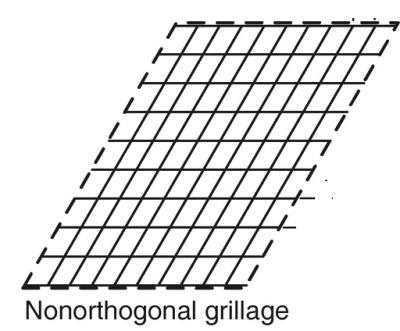AASHTO very explicitly outlines the criteria when the transverse deck reinforcement can be skewed up to a certain angle. My understanding since this is in Chapter 9, is that it only applies to decks on beams. So my question is what's everyone's opinion on skewing transverse reinforcement slab span bridges? I've got a 30 degree skew and I'd like to skew the transverse reinforcement but I'm reluctant for some reason. This steel isn't primary reinforcing. The bottom mat does have requirements for distribution reinforcement but could this not be skewed?
Tek-Tips is the largest IT community on the Internet today!
Members share and learn making Tek-Tips Forums the best source of peer-reviewed technical information on the Internet!
-
Congratulations TugboatEng on being selected by the Eng-Tips community for having the most helpful posts in the forums last week. Way to Go!
Skewed Slab Span Bridge
- Thread starter umrce
- Start date

